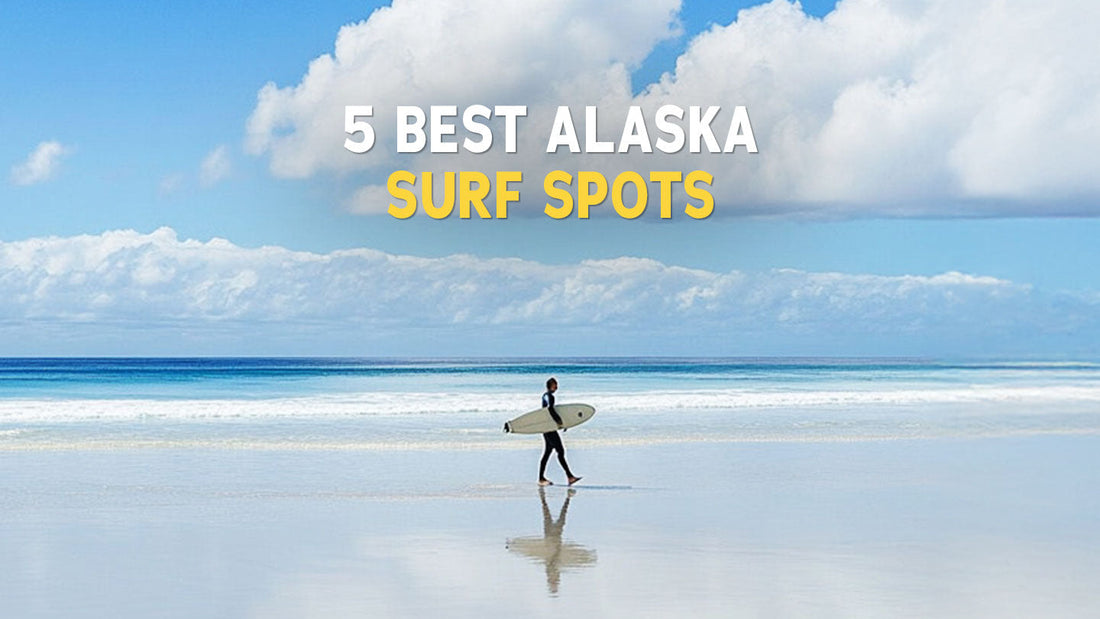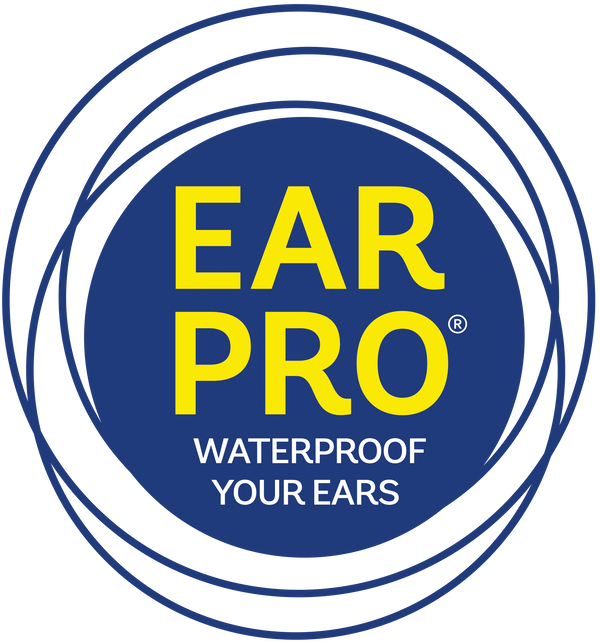
5 Best Alaska Surf Spots
Share
Alaska, known as the "Last Frontier," offers a surfing experience like no other. With over 34,000 miles of coastline, the state boasts some of the best Alaska surf spots that combine untamed beauty, solitude, and adventure.
Surfing here means riding waves surrounded by snow-capped mountains, glaciers, and abundant wildlife.
Unlike traditional surf destinations, surfing in the Last Frontier demands preparation and resilience.
With the right gear and mindset, surfing along the Alaskan coastline becomes an unforgettable adventure.
Table of Contents
1. Best Surf Beaches in Alaska
-
Yakutat
-
Kodiak Island
-
Sitka
-
Turnagain Arm
-
Homer Spit
2. Why Alaska is a Surfer’s Hidden Gem on the Pacific Coast
3. Remote Surfing Locations and Their Appeal
4. The Best Time to Surf in Alaska
5. Cold-Water Surfing: What You Need to Know
6. Surfing Safety Tips in Alaska
7. Local Surf Culture in Alaska
8. Conclusion
9. Frequently Asked Questions
Best Surf Beaches in Alaska
1. Yakutat
Yakutat is Alaska’s surfing capital and is among the best Alaska surf spots for both locals and visitors.
Cannon Beach, located here, provides consistent waves year-round.
The wide beach break caters to all skill levels, offering manageable waves for beginners and challenging swells for advanced surfers.
-
Wave Type: Consistent beach break
-
Skill Level: Beginner to advanced
Visit the Yakutat Historical Society Museum to learn about the area’s rich cultural heritage. Afterward, enjoy a serene hike along the Situk River, where you can spot bald eagles and other wildlife.
2. Kodiak Island
Kodiak Island is one of the best Alaska surf spots for surfers seeking uncrowded waves and stunning surroundings.
Fossil Beach is its standout spot, known for consistently breaking cobblestone-bottom waves. This remote surf location offers peace away from the bustling surf scenes elsewhere.
-
Wave Type: Reef breaks over cobblestone bottom
-
Skill Level: Intermediate to advanced
Spend time at the Kodiak National Wildlife Refuge, home to diverse wildlife like bears and foxes. You can also enjoy fishing in the island’s pristine waters for an authentic Alaskan experience.
3. Sitka
Sitka is a versatile surfing destination with multiple spots to explore. Shoals Reef and Sea Lion Cove provide reef and beach breaks, while Sandy Beach is ideal for beginners.
Its vibrant marine life and scenic beauty complement the area's surf.
-
Wave Type: Reef and beach breaks
-
Skill Level: Beginner to advanced
After catching waves, visit the Sitka National Historical Park to explore its fascinating cultural exhibits. Wrap up your day with fresh seafood at one of Sitka’s charming waterfront restaurants.
4. Turnagain Arm
Turnagain Arm near Anchorage offers a one-of-a-kind experience with its tidal bore waves.
These long, continuous waves form when incoming tides meet the outflowing waters of Cook Inlet. This is one of the best Alaska surf spots for experienced surfers who can handle the unique challenge.
-
Wave Type: Tidal bore waves
-
Skill Level: Advanced
Drive along the scenic Seward Highway to reach Turnagain Arm, taking in views of mountains and glaciers. After surfing, explore the Anchorage Coastal Wildlife Refuge, known for its abundant birdlife and tranquil walking trails.
5. Homer Spit
Homer Spit is a hidden gem for surfing enthusiasts looking for variety and adventure.
The spot offers sandy-bottom waves and breathtaking views of Kachemak Bay. While less known, it’s one of the best Alaska surf spots for those seeking solitude.
-
Wave Type: Sandy-bottom beach break
-
Skill Level: Beginner to intermediate
Walk along the Homer Spit boardwalk to find unique shops and art galleries showcasing local crafts. Don’t miss the opportunity to savor freshly caught seafood at nearby restaurants overlooking the bay.
Why Alaska is a Surfer’s Hidden Gem on the Pacific Coast
The best Alaska surf spots stand out for their unparalleled natural beauty and remoteness.
Unlike the bustling surf culture of California’s Malibu or Hawaii’s famous Waikiki Beach, Alaska offers solitude and an intimate connection with nature.
Surfers here are treated to awe-inspiring backdrops of glaciers, snow-capped mountains, and pristine wilderness, making every wave a memorable experience.
The waves in Alaska vary greatly, from beginner-friendly beach breaks to challenging reef waves that test advanced surfers.
While the state is home to renowned spots like Yakutat and Kodiak Island, it also boasts lesser-known gems like Resurrection Bay and Copper River Delta.
Remote Surfing Locations and Their Appeal
Remote surf spots in Alaska offer more than just waves; they provide an unparalleled sense of adventure and solitude.
Locations like Kodiak Island and Yakutat are free from the bustling crowds seen in more mainstream surf destinations, allowing surfers to connect deeply with nature.
These spots deliver pristine, unspoiled coastlines where the sound of crashing waves is accompanied only by the calls of seabirds and the occasional sight of marine wildlife.
The surf breaks in the North Pacific are renowned for their raw power and diversity.
What truly sets remote surfing in Alaska apart is the sense of discovery it provides. Each trip to a hidden surf spot feels like an expedition, where the journey itself—through rugged terrains, dense forests, and icy waters—is as memorable as the waves you ride.
These locations attract surfers who crave not just the thrill of surfing but the reward of finding untouched natural beauty.
The Best Time to Surf in Alaska
The Alaskan surf seasons are shaped by its unique climate conditions.
-
Spring (April to May): Consistent swells and mild weather, ideal for beginners
-
Summer (June to August): Calmer waves but fewer consistent swells, great for exploration
-
Fall (September to November): Fall brings the best surf conditions in Alaska with larger swells and moderate weather
-
Winter (December to March): Extreme cold with powerful waves, suitable only for experienced surfers
Always check ocean conditions before planning your trip, as weather can change rapidly.
Cold-Water Surfing: What You Need to Know
Surfing in some of the best locations in Alaska is not for the faint of heart, but with the right preparation, it becomes an exhilarating adventure.
The frigid waters of Alaska demand specialized gear to ensure both safety and comfort.
A 5/4mm hooded wetsuit is essential, along with 5mm booties and gloves, to protect against hypothermia in water temperatures that can dip into the 30s°F. These items are non-negotiable for tackling the icy waves.
For added safety, bring hot water in insulated containers to rinse off after your session. A thermos with a warm drink can help you regain body heat quickly.
Cold-water surfing tips also include practicing your paddling and duck-diving techniques in controlled conditions to adapt to the added resistance of thick wetsuits.
Moreover, staying informed about weather and ocean conditions is crucial. Alaskan waters are unpredictable, with sudden storms and strong tidal changes.
Surfing Safety Tips in Alaska
Surfing in Alaska’s remote and cold waters requires a strong focus on safety. By taking the right precautions, you can enjoy the waves while minimizing risks. Here are detailed safety tips to keep in mind.
1. Use Ear Protection: The cold water in Alaska can lead to conditions like surfer’s ear and infections. High-quality earplugs or mineral oil-based sprays can create a barrier against cold water and bacteria, ensuring your ears stay protected during long sessions.
2. Know the Tides: Alaska’s tides are powerful and unpredictable, with significant tidal swings that can expose dangerous rocks and reefs. Always consult tide charts before heading out and aim to surf during high tide when conditions are generally safer.
3. Inspect Your Gear: Cold water and rugged surf conditions can put extra strain on your equipment. Check your surfboard, leash, wetsuit, and fins for damage before each session. Faulty gear can compromise your safety in the challenging waves.
4. Surf With a Partner: The remoteness of many Alaskan surf spots makes it essential to have a buddy. Surfing with a partner ensures that someone can assist or call for help in case of an emergency.
5. Understand Local Wildlife: Alaska’s waters are home to diverse marine life, including seals, otters, and whales. While these creatures are generally not aggressive, it’s important to give them space and remain aware of your surroundings to avoid accidental encounters.
6. Prepare for Cold Water: Hypothermia is a real risk in Alaska’s frigid waters. Wear a 5/4mm hooded wetsuit, 5mm booties, and gloves to maintain body heat. Bring a thermos with a warm drink and hot water to rinse off after your session.
7. Plan for Emergencies: Carry a waterproof communication device or let someone know your location and expected return time. Many Alaskan beaches are remote, with limited cell service and few nearby facilities.
By following these tips, you can safely navigate the challenges of Alaska’s stunning but unforgiving surf spots, making your experience as enjoyable as it is adventurous.
Local Surf Culture in Alaska
The surf community in Alaska is tight-knit and supportive, sharing a deep respect for the ocean and its power.
Cold-water surfing is becoming an increasingly popular sport in Alaska, with adventurous surfers drawn to the state’s unique challenges.
Events like the Yakutat Surf Classic bring together surfers from all over the Pacific Northwest to celebrate the spirit of surfing in one of the most remote locations in the world.
Surf shops in places like Kodiak and Sitka serve as hubs for the local surf scene. These shops offer gear rentals, lessons, and valuable advice for navigating the surf breaks in the North Pacific.
This blend of sport, community, and culture makes surfing in Alaska an enriching and unforgettable experience.
Conclusion
The best Alaska surf spots are a testament to the state’s untamed beauty and adventurous spirit.
From the tidal bore waves of Turnagain Arm to the reef breaks of Kodiak Island, Alaska offers unique surfing experiences for those willing to embrace its challenges.
Beyond the waves, the state’s rich culture and pristine landscapes make it a destination like no other. For surfers and explorers alike, Alaska promises memories that last a lifetime.
Frequently Asked Questions
1. What are the best surf spots in Alaska?
The best Alaska surf spots include Yakutat, Kodiak Island, Sitka, Turnagain Arm, and Homer Spit. These locations offer a mix of beach and reef breaks suitable for different skill levels.
2. Is surfing in Alaska dangerous?
Surfing in Alaska can be challenging due to cold water temperatures, powerful waves, and remote locations. Proper preparation, including wearing appropriate gear and checking weather and tide conditions, helps ensure safety.
3. How cold is the water for surfing in Alaska?
The water temperature in Alaska ranges from 30\u00b0F to 50\u00b0F, depending on the season. A 5/4mm hooded wetsuit, along with gloves and booties, is essential to stay warm.
4. When is the best time to surf in Alaska?
The best surf conditions in Alaska occur in spring (April-May) and fall (September-November), offering consistent swells and manageable weather for surfing.

